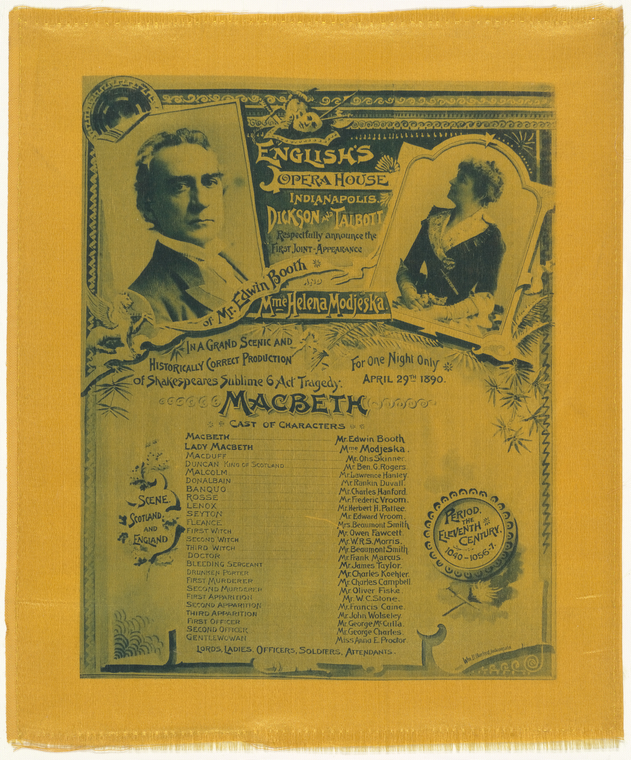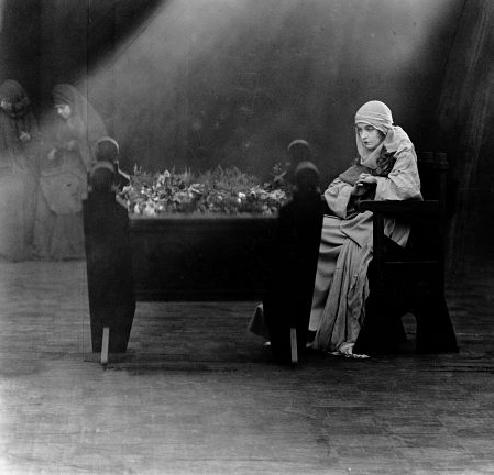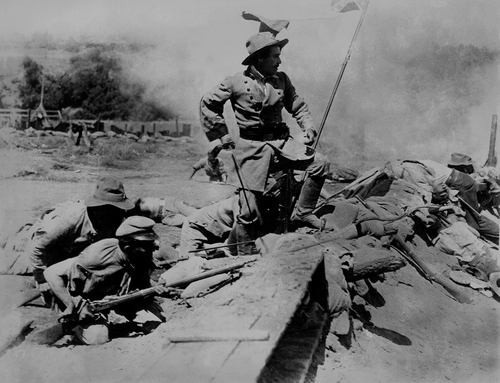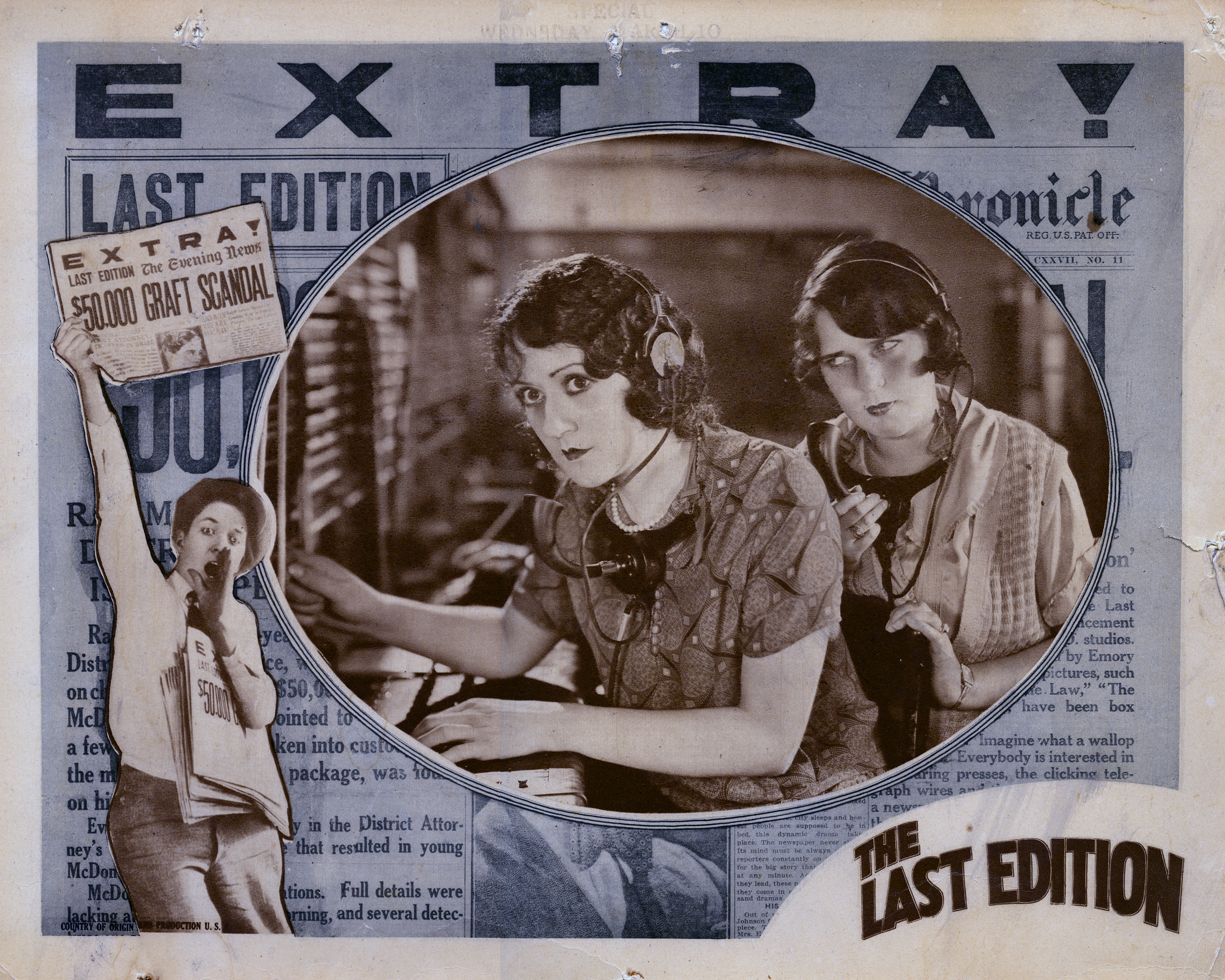|
The Mailman (1923 Film)
The Mailman is a 1923 American silent melodrama directed by Emory Johnson. FBO released the film in December 1923. The film's "All-Star" cast included Ralph Lewis, Johnnie Walker, and Virginia True Boardman. Emilie Johnson, Johnson's mother, wrote both the story and screenplay. was the fourth film in Johnson's eight-picture contract with FBO. The U. S. Mail Service honors Bob Morley (Ralph Lewis) and his son Johnnie (Johnnie Walker) for their many years of service. Afterward, Johnnie is promoted to an officer on the U. S. Mail Service ship — Enterprise. The craft transports registered mail and other valuable cargo. While Johnnie is on duty, thieves rob the boat and gun down the supervisor. Through a series of unfortunate events, they charge Johnnie with theft and murder. Since he has no alibi, the court finds him guilty of both crimes. When the court is about to pass a sentence, the actual wrongdoer confesses and saves Johnnie from his date with the hangman's noose. Plot ... [...More Info...] [...Related Items...] OR: [Wikipedia] [Google] [Baidu] |
The Mailman (1923 Film)
The Mailman is a 1923 American silent melodrama directed by Emory Johnson. FBO released the film in December 1923. The film's "All-Star" cast included Ralph Lewis, Johnnie Walker, and Virginia True Boardman. Emilie Johnson, Johnson's mother, wrote both the story and screenplay. was the fourth film in Johnson's eight-picture contract with FBO. The U. S. Mail Service honors Bob Morley (Ralph Lewis) and his son Johnnie (Johnnie Walker) for their many years of service. Afterward, Johnnie is promoted to an officer on the U. S. Mail Service ship — Enterprise. The craft transports registered mail and other valuable cargo. While Johnnie is on duty, thieves rob the boat and gun down the supervisor. Through a series of unfortunate events, they charge Johnnie with theft and murder. Since he has no alibi, the court finds him guilty of both crimes. When the court is about to pass a sentence, the actual wrongdoer confesses and saves Johnnie from his date with the hangman's noose. Plot ... [...More Info...] [...Related Items...] OR: [Wikipedia] [Google] [Baidu] |
Richard Morris (actor)
Richard Morris (born William Richard Stuart Morris; January 30, 1862 – October 11, 1924) was an American opera singer, stage performer, and a silent film actor. Morris was born on January 30, 1862, in Charlestown, Massachusetts. He was 62 years old when he died in Los Angeles, California on October 11, 1924. Between 1912 and 1924, Richard Morris acted in 59 films. Early years William Richard Stuart Morris was born on January 30, 1862, to working-class Irish parents in Charlestown, Massachusetts, the oldest Irish neighborhood in the city of Boston. Some fan magazines claim his birth was January 3, but the neglected zero is apparent. His father was an Irish Immigrant, William A. Morris. His mother was a native of Bostonian Catherine Morris (née Keefe). Since he was the firstborn son in an Irish Catholic family, his parents gave him William's first name, like his father and father before him. 1870 census records list Morris's father as an expressman. The same census record lis ... [...More Info...] [...Related Items...] OR: [Wikipedia] [Google] [Baidu] |
Intolerance (film)
''Intolerance'' is a 1916 epic silent film directed by D. W. Griffith. Subtitles include ''Love's Struggle Throughout the Ages'' and ''A Sun-Play of the Ages''.Internet Archive foIntolerance (1916), D. W. Griffith. Retrieved May 21, 2016. Regarded as one of the most influential films of the silent era (though it received mixed reviews at the time), the three-and-a-half-hour epic intercuts four parallel storylines, each separated by several centuries: first, a contemporary melodrama of crime and redemption; second, a Judean story: Christ's mission and death; third, a French story: the events surrounding the St. Bartholomew's Day massacre of 1572; and fourth, a Babylonian story: the fall of the Babylonian Empire to Persia in 539 BC. Each story had its own distinctive color tint in the original print. The scenes are linked by shots of a figure representing Eternal Motherhood, rocking a cradle. Griffith chose to explore the theme of intolerance partly in response to his previous ... [...More Info...] [...Related Items...] OR: [Wikipedia] [Google] [Baidu] |
The Birth Of A Nation
''The Birth of a Nation'', originally called ''The Clansman'', is a 1915 American silent epic drama film directed by D. W. Griffith and starring Lillian Gish. The screenplay is adapted from Thomas Dixon Jr.'s 1905 novel and play ''The Clansman''. Griffith co-wrote the screenplay with Frank E. Woods and produced the film with Harry Aitken. ''The Birth of a Nation'' is a landmark of film history, lauded for its technical virtuosity. It was the first non-serial American 12-reel film ever made. Its plot, part fiction and part history, chronicles the assassination of Abraham Lincoln by John Wilkes Booth and the relationship of two families in the Civil War and Reconstruction eras over the course of several years—the pro-Union ( Northern) Stonemans and the pro- Confederacy ( Southern) Camerons. It was originally shown in two parts separated by an intermission, and it was the first American-made film to have a musical score for an orchestra. It pioneered closeups and fadeout ... [...More Info...] [...Related Items...] OR: [Wikipedia] [Google] [Baidu] |
The Last Edition
''The Last Edition'' is a 1925 American silent film, silent drama film directed by Emory Johnson based on the story by Emilie Johnson. The photoplay is set in San Francisco, California, and stars Ralph Lewis (actor), Ralph Lewis as a Printing press, pressman at the ''San Francisco Chronicle'' newspaper. The movie was released on November 8, 1925 by Film Booking Offices of America. The motion picture was filmed in and around the "Old Chronicle Building" located at 690 Market Street in downtown San Francisco. However, "in 1924, ''The Chronicle'' commissioned a new headquarters at 901 Mission Street on the corner of 5th Street." ''The Chronicle'' completed the move in 1925, shortly after the film crews were finished shooting. Plot The story starts by introducing us to Tom McDonald, played by Ralph Lewis (actor), Ralph Lewis. Tom is a Printing press, pressman and the assistant foreman in the ''San Francisco Chronicle'' pressroom. Tom finds out he was passed over for the job of press ... [...More Info...] [...Related Items...] OR: [Wikipedia] [Google] [Baidu] |
The West~Bound Limited
The West~Bound Limited is a 1923 American silent melodrama film directed by Emory Johnson. Emilie Johnson, Emory's mother, wrote both the story and screenplay. The film's cast features Ralph Lewis, Claire McDowell, Johnny Harron, and Ella Hall. was the third film in Emory Johnson's eight-picture contract with FBO. The film was released on April 15, 1923. Esther Miller, the daughter of the railway company's president, and her mother ride horses alongside the railroad tracks. While crossing the tracks, Esther becomes entangled along with her horse. Simultaneously, Railroad engineer Bill Buckley steams down the mainline towards the helpless Esther and her horse. Bill Buckley's son, Johnny, rescues her at the last minute. Esther develops feelings for her newfound hero. A thankful Esther gives Johnny her horse, and a grateful father provides the Buckley family with a new home. Soon, the President's general counselor, J. Lawrence Wilton, reveals he has emotions for Esther and ... [...More Info...] [...Related Items...] OR: [Wikipedia] [Google] [Baidu] |
The Third Alarm (1922 Film)
''The Third Alarm'' is a 1922 American silent melodrama film directed by Emory Johnson. Emilie Johnson, Emory's mother, wrote both the story and screenplay. The film's "All-Star" cast features Ralph Lewis, Johnnie Walker, and Emory Johnson's wife Ella Hall. The film was released on January 7, 1923. Dan McDowell was a veteran fireman and driver of a horse-drawn Fire Engine. The department motorizes the station's equipment. Dan cannot master the driving skills needed to operate the new motorized vehicles. The fire chief retires Dan with a small pension. Johnny, Dan's son, is studying to become a doctor. Dan had supported his son's ambitions but now cannot support his family and Johnnie's schooling. He takes a job digging ditches. Circumstances befall Dan, and he lives through various misfortunes. Johnnie, no longer able to afford medical school, takes a job as a fireman. All storylines converge as a three-alarm fire breaks out. This Melodrama has a predictable happy ending. ... [...More Info...] [...Related Items...] OR: [Wikipedia] [Google] [Baidu] |
In The Name Of The Law (1922 Film)
''In the Name of the Law'' was released by Film Booking Offices of America in August 1922. The feature film's director was Emory Johnson. Emory was 28 years old when he directed and acted in this film. It starred veteran actors Ralph Lewis and Claire McDowell. The police melodrama was about a San Francisco police officer. He was a dedicated community servant. The story depicts his struggles with the duality of dedication to duty versus devotion to family. The film was a pioneering effort in other aspects. It was a serious film about law enforcement. Movies had cinematically maligned the profession in the past. The film is also an early example of an innovative exploitation strategy. The scheme involved getting the group featured on the screen aligned with their real-life counterparts and promoting the film. Plot Prologue The story's prologue opens when policeman Patrick O'Hara discovers a lost child. She has stolen some milk. Rather than disciplining her, he takes her ho ... [...More Info...] [...Related Items...] OR: [Wikipedia] [Google] [Baidu] |
Englewood, Illinois
Englewood is a neighborhood and community area located on the South Side, Chicago, South Side of Chicago, Illinois, United States. It is also the 68th of the 77 Community areas in Chicago, community areas in the city. At its peak population in 1960, over 97,000 people lived in its approximately , but the neighborhood's population has since dropped dramatically. In 2000, it had a population of approximately 40,000 inhabitants, and the 2010 census indicated that its population has further declined to approximately 30,000. Englewood is bordered by Garfield Boulevard to the north, 75th Street to the south, Racine Avenue to the west, and an irregular border that wends along the Metra Railroad Tracks to the east. On the southwest side of Chicago lies West Englewood, Chicago, West Englewood, which is generally lumped in with Englewood by Chicagoans. History Before 1850, Englewood was an oak forest with much swampland. In 1852 several railroad lines crossed at what became known as Junct ... [...More Info...] [...Related Items...] OR: [Wikipedia] [Google] [Baidu] |
Film Booking Office Of America
Film Booking Offices of America (FBO), registered as FBO Pictures Corp., was an American film studio of the silent era, a midsize producer and distributor of mostly low-budget films. The business began in 1918 as Robertson-Cole, an Anglo-American import-export company. Robertson-Cole began distributing films in the United States that December and opened a Los Angeles production facility in 1920. Late that year, R-C entered into a working relationship with East Coast financier Joseph P. Kennedy. A business reorganization in 1922 led to the company's assumption of the new FBO name. Two years later, the studio contracted with Western leading man Fred Thomson, who within a couple years was one of Hollywood's most popular stars. Thomson was just one of several silent screen cowboys with whom FBO became identified. The studio, whose core market was America's small towns, also put out many romantic melodramas, action pictures, and comedic shorts. Pauline Frederick and Sessue Hayakawa ... [...More Info...] [...Related Items...] OR: [Wikipedia] [Google] [Baidu] |
Feature Length
A feature film or feature-length film is a narrative film (motion picture or "movie") with a running time long enough to be considered the principal or sole presentation in a commercial entertainment program. The term ''feature film'' originally referred to the main, full-length film in a cinema program that included a short film and often a newsreel. Matinee programs, especially in the US and Canada, in general, also included cartoons, at least one weekly serial and, typically, a second feature-length film on weekends. The first narrative feature film was the 60-minute ''The Story of the Kelly Gang'' (1906, Australia). Other early feature films include ''Les Misérables'' (1909, U.S.), ''L'Inferno'', ''Defence of Sevastopol'' (1911), '' Oliver Twist'' (American version), '' Oliver Twist'' (British version), '' Richard III'', ''From the Manger to the Cross'', '' Cleopatra'' (1912), '' Quo Vadis?'' (1913), ''Cabiria'' (1914) and ''The Birth of a Nation'' (1915). Description The ... [...More Info...] [...Related Items...] OR: [Wikipedia] [Google] [Baidu] |
Major Film Studios
Major film studios are production and distribution companies that release a substantial number of films annually and consistently command a significant share of box office revenue in a given market. In the American and international markets, the major film studios, often known simply as the majors or the Big Five studios, are commonly regarded as the five diversified media conglomerates whose various film production and distribution subsidiaries collectively command approximately 80 to 85% of U.S. box office revenue. The term may also be applied more specifically to the primary motion picture business subsidiary of each respective conglomerate. Since the dawn of filmmaking, the U.S. major film studios have dominated both American cinema and the global film industry. U.S. studios have benefited from a strong first-mover advantage in that they were the first to industrialize filmmaking and master the art of mass-producing and distributing high-quality films with broad cross-cultu ... [...More Info...] [...Related Items...] OR: [Wikipedia] [Google] [Baidu] |
.png)








